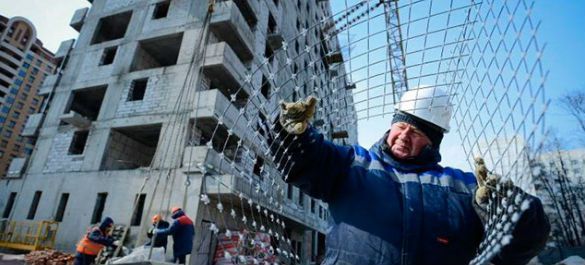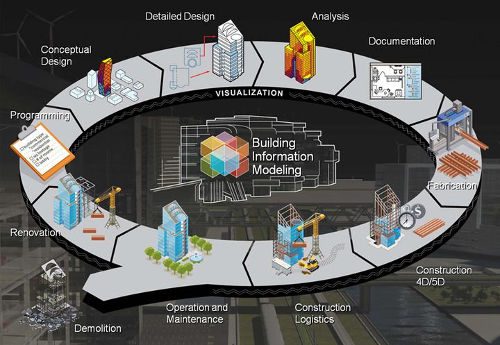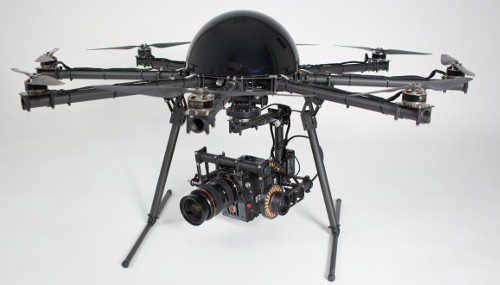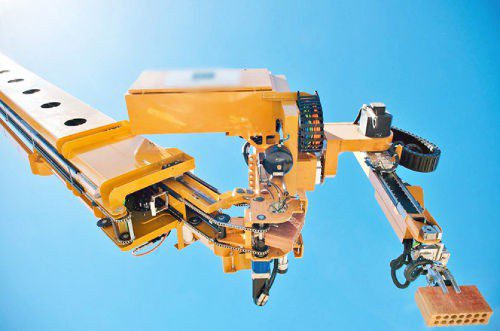
8 innovations that are shaking the construction industry!
Content
- 1. BIM: a major innovation in the construction industry.
- 3D printing: myth or reality?
- Connected Facilities: Innovation for Construction Site Safety Management
- Big Data: data for website optimization
- Drones in the construction industry: a better overview of the work in progress?
- Robots: famous characters
- Self-healing concrete
- Collaborative economics applied to construction
Building sector is the sector particularly permeable to innovation ... These technological advances come in several flavors: connected objects, 3D printers, BIM, data management (big data), drones, robots, self-healing concrete, or even a collaborative economy. They lead to a change in the way the site works or design. The Tracktor team has decided to introduce you to each of these innovations, before diving into the subject in other articles to show their impact on the construction sector.
1. BIM: a major innovation in the construction industry.

BIM in construction © Autodesk
From English "Building Information Modeling" BIM can be translated as Building Information Modeling ... BIM deals with construction, construction and infrastructure. Like related entities, its development is associated with the democratization of the Internet, as well as the growth of collaboration practices initiated by the Linux operating system.
As for its definition, it differs depending on the logic. First, it is a XNUMXD digital layout containing intelligent and structured data. This data is used by different project participants. This model contains information about the characteristics (technical, functional, physical) of the objects used for construction.
It has many advantages:
- Time saving due to better knowledge of all technical details;
- Elimination of the risk of "information asymmetry", which allows better taking into account the expectations / fears of all stakeholders;
- Improved build quality;
- Reducing the risk of accidents.
BIM also enables real-time estimates of the cost that modification can cause in a structure, manage synthesis between different parties during the design and construction phase, create virtual representations and XNUMXD images for marketing, and optimize building maintenance. after that.
To transition to BIM, you need to learn and arm yourself. It's expensive, but BIM seems necessary ... This is a global trend, which manifests itself, for example, in the fact that the UK and Singapore are already leading the way in ensuring the mandatory use of technology in government projects. In France, the first building permit for BIM was obtained in Marne-la-Vallee.
3D printing: myth or reality?

3D printer in the construction industry
The first experiments date back to the 1980s. Explosive growth occurred in the early 2000s before slower growth was seen.
The Futura-Sciences website defines 3D printing as “ the so-called additive manufacturing technique, which consists of adding material, as opposed to methods that use material removal, such as machining. "
In the construction sector, this technology can be used to create emergency shelters to deal with the aftermath of a natural disaster and allow disaster victims to get a place to live very quickly. The most famous example of using a 3D printer is the Chinese company Winsun, which managed to print a 6-story building using a printer 40 meters long! Its use on a construction site can be useful in limiting accidents and better control at various stages. The first experiment is currently underway in Italy to build an entire village using a 3D printer.
However, it is difficult for an average person to imagine a construction from a printer. Will fantasy come true around this object?
Connected Facilities: Innovation for Construction Site Safety Management
In line with the development of the Internet since the early 1990s, connected objects or the Internet of Things have gradually invaded our environment. For the Dictionnaireduweb site, connected objects are “ types of entities whose primary purpose is not to be computer peripherals or web access interfaces, but for which the addition of an Internet connection has allowed additional value to be provided in terms of functionality, information, interaction with the environment, or use .
In other words, linked objects, since they collect and store significant amounts of information depending on the environment, will provide very detailed information about the user. This information can be used to quickly protect against risk in the event of an abnormal event (machine failure or abnormally high or low rates).
Building the sector is obviously no exception to this logic and solutions such as Solution Selex (connected building) have emerged. These solutions will identify inefficiencies, enhance preventive maintenance, and thus reduce energy consumption. Other examples are available. In our previous article on the news at Bauma 2016, we introduced you to Topcon's GX-55 control unit, which provides real-time information during excavation.
Big Data: data for website optimization

Big data in the construction industry
The term originated in the United States in the early 2000s under the leadership of Google, Yahoo, or Apache. The main French terms that directly refer to big data are "megadata" or "massive data". The latter means unstructured and very large dataset, which makes it useless to process this data with conventional tools. It is based on the principle 3B (or even 5):
- The amount of data processed is constantly and rapidly increasing;
- Speed because the collection, analysis and use of this data must be done in real time;
- Diversity because data is collected from different and unstructured sources.
There are many applications ranging from health, safety, insurance, distribution.
One of the most famous examples of the use of big data in construction industry is "Smart grid". The latter is a communication network that allows you to manage the network in real time in order to optimize its resources.
Drones in the construction industry: a better overview of the work in progress?

Drone in the construction industry © Pixiel
Like many innovations, we must look for origins precisely in the military field. For the first time, drones were used during the conflicts of the 1990s (Kosovo, Iraq) to carry out reconnaissance tasks .
According to the definition given by INSA Strasbourg, a drone is “ an unmanned, remotely piloted, semi-autonomous, or autonomous aircraft capable of carrying a variety of payloads, making it capable of performing specific missions over a period of time. The flight may vary depending on its capability. «
The areas in which drones are primarily used are safety, building , healthcare and aeronautics. Recently, they have appeared on construction sites as an experiment. They are used to create 3D models, conduct topographic surveys, diagnose hard-to-reach structures, monitor the development of construction sites, and perform energy diagnostics. Benefits for construction industry expressed in higher productivity, economies of scale and improved safety on construction sites.
Robots: famous characters
Robots, feared and feared for their appearance, are gradually beginning to unfold at construction sites. Ensuring safety is the main argument of the robot's supporters. However, time constraints related to the speed of construction of the facility and the need to reduce labor costs have also contributed to its spread.

Adrian's Robot © Fast Brick Robotics
Robots, feared and feared for their appearance, are gradually beginning to unfold at construction sites. Ensuring safety is the main argument of the robot's supporters. However, time constraints related to the speed of construction of the facility and the need to reduce labor costs have also contributed to its spread.
If there are many models, they talk about one. His name is Adrian. This robot - innovation for the industry ... According to its creator, Mark Pivac, he will have the opportunity to build a house in less than a day. The speed already dreamed of. It is capable of collecting 1000 bricks per hour (versus 120-350 for a worker), it has a 28 meter boom, which allows for very precise assembly. The promise of speed and accuracy!
Controversy was quickly sparked because he was accused of destroying a significant number of jobs. This controversy was sparked by its founder, who believes that it only takes two workers to construct a building, one to manage it and the other to ensure the end result. However, its high cost means that the French are not ready to see this intriguing object up close.
Self-healing concrete
Over time, concrete decomposes and forms cracks. This leads to water ingress and corrosion of the steel. Consequently, this can lead to the collapse of the structure. Since 2006, microbiologist Hank Yonkers has been developing innovation : concrete capable of filling microcracks on its own. For this, bacteria are introduced into the material. When in contact with water, they convert nutrients into limestone and repair micro-cracks before they get bigger. Strong and inexpensive concrete continues to be the most widely used building material in the world. Its average service life is 100 years, and thanks to this process, it can be increased by 20-40%.
However, despite the support provided by the European Union to reduce environmental impacts and the savings in maintenance and service life of the sites that they create, democratization of this process is difficult to foresee due to the difficult economic conditions. The reason? Too high cost as it is estimated to be 50% more expensive than regular concrete. But in the long run, it represents a serious alternative for buildings, subject to leaks or corrosion (tunnels, marine environments, etc.).
Collaborative economics applied to construction

Collaborative economics in the construction industry
The collaboration economy emerged from the economic crisis and has become famous for platforms such as AirBnB and Blablacar. This economy, which favors use over property, seems to be developing across all sectors and industries. Optimizing resources through sharing has always existed in construction industry, but was not structured. The development of platforms such as Tracktor allows construction companies to rent out unused machines, generate additional income and reduce waste.
List innovations clearly not exhaustive. We can talk about tablets for joint control, about augmented reality. Has this article caught your attention? Share with your contacts!
